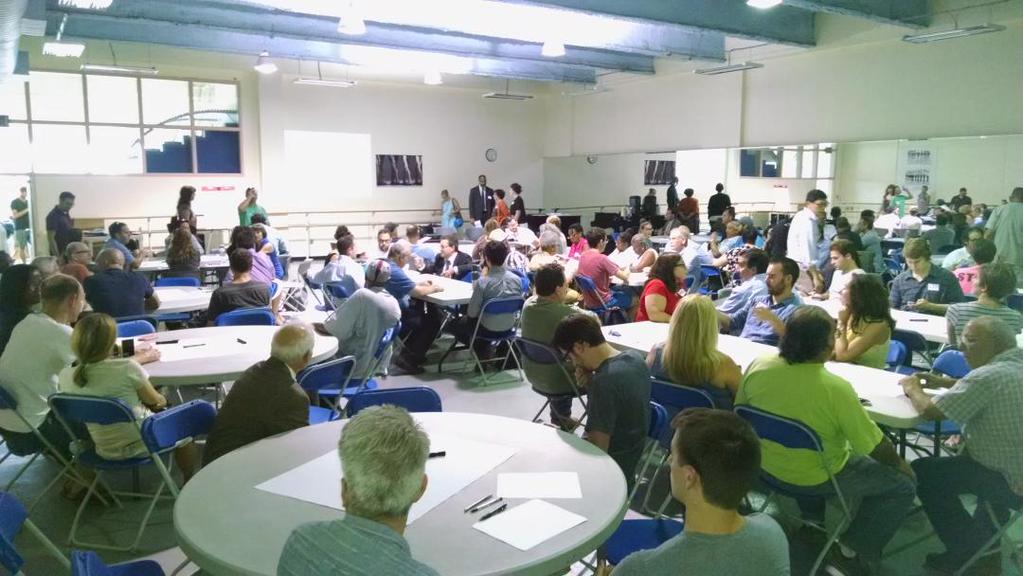
Concerned citizens meet about the future of Washington Avenue on September 3, 2015.
Everyone agrees something needs to happen on Washington Avenue. And for the last two years, few could agree on what those changes should look like. On Thursday evening, about 200 people met at the Rock Dance School at Broad and Washington to, we hoped, bring an end to those discussions and get Washington Avenue’s plans moving again and ultimately, completed.
The meeting took place between about a dozen tables around a large room on the fourth floor, where civic-minded participants heard from representatives at the Mayor’s Office of Transportation and Utilities, Streets Department and the Planning Commission who gave some context to the problems plaguing the street, and what could potentially be done to make it safer for all road users.
“There’s one thing we’re clear on,” explained Mike Carroll of the Streets Department, who co-ran the meeting. “Something needs to happen.” High crash-rates on the street remain constant, people double-park their cars in bike and motor vehicle driving lanes, the lights aren’t long enough for pedestrians to cross, and parking in the median (which is illegal) is a daily activity by drivers.
Among the most important changes those in groups at tables came up with for the avenue: Better bike lanes, a legal posted speed limit, the same standard of safety for everyone, meters to encourage more car turnover, and signal timing and pedestrian countdowns, making the street safer for bicyclists.
Long-term, Carroll showed diagrams of spots in Philadelphia where flexible bollards are often used to create a more physical separation between motor vehicle and bicycle traffic and pedestrian refuges.
Toward the end of the meeting, though, Angela Dixon, of the Mayor’s Office of Transportation and Utilities, noted that if all goes well, we could see these permanent road changes happen—in Summer 2016.
Whatever the situation, the Bicycle Coalition is going to keep pressing for a faster deadline than that. If new pavement markings don’t go down for nine to ten months, , there will be another 300 or so crashes along the 2.9 mile corridor and, likely, a needless traffic death. There are very low-cost, and timely changes that can be sooner rather than later. In my neighborhood alone, York Street was completely remade overnight, with a single lane of traffic, a bike lane, paint telling cars to stop, and timed lights. Of course, York Street is not Washington Avenue, but if those changes can happen in less than a week, there’s no reason Philadelphians need to wait until next summer to see a new, better Washington Avenue for those road users who use it as a through street and as a destination.
